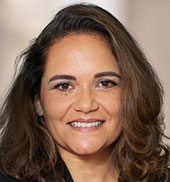In the not-so-distant past, a reference to “Big Sugar” was meant as a joke. (Look to the 2002 Simpsons episode where Marge peddles a class action lawsuit against “Big Sugar”). Nowadays, it’s meant as a threat. See, e.g., Cristin Kearns, Stanton Glantz, & Laura Schmidt, “Sugar Industry Influence on the Scientific Agenda of the National Institute of Dental Research’s 1971 National Caries Program: a historical analysis of internal documents,” PLOS Med. 2015 Mar 10 (likening the sugar industry to the tobacco industry and asserting the usefulness of internal sugar industry documents in litigation).
Scientists and journalists compare sugar to hard drugs. Nicole Avena, et al. “Evidence for sugar addiction: behavioral and neurochemical effects of intermittent, excessive sugar intake,” Neurosci. Biobehav. Rev. 2008; 32(1):20-39 (finding that “sugar … meets the criteria for a substance of abuse and may be ‘addictive,’” comparing its effects to cocaine and morphine). Michael Moss’ 2013 bestseller, “Salt Sugar Fat,” referred to sugar as “the methamphetamine of processed food ingredients.” Michael Moss, “Salt Sugar Fat” (Random House 2013).
Added sugar is a particular target of the public health community and the media. The United States Food and Drug Administration has recently announced a proposal that would not only require “added sugars” on the Nutrition Facts label of packaged food, but would also include the percent daily value (%DV) for added sugars, as well. And this past summer, a population attributable risk study published in the journal Circulation, purported to link 184,000 deaths worldwide to “sugar-sweetened beverages.” Gitanjali Singh, et al. “Estimated Global, Regional, and National Disease Burdens Related to Sugar-Sweetened Beverage Consumption in 2010. Circulation, 2015:132:639-666. One news outlet reporting on the study claimed in its headline that sugary drinks are more deadly than violent crime.
Despite the popular notion that added sugar is dangerous, earlier this year a federal district court (sometimes referred to as “California’s Food Court” due to its food industry heavy case docket) refused to take the bait.
In Major v. Ocean Spray Cranberries, Inc., 2015 WL 859491 (N.D. Cal. Feb. 26, 2015), the Northern District Court for the District of California granted summary judgment to the defendant, where the plaintiff was aware that defendant’s juice drinks were not low calorie, but claimed the label “No Sugar Added” nonetheless misled consumers into believing the drinks were “better” or “healthier.”
In Major, the plaintiff sought class certification alleging that labels on Ocean Spray’s 100% juice products, which stated “No Sugar Added,” were deceptive, violating California’s Unfair Competition Law, false advertising laws, and the Consumer Legal Remedies Act. Id. at *2. According to the plaintiff, the labeling was unlawful because the labels included the language “No Sugar Added,” but did not include a disclaimer allegedly required by 21 C.F.R. § 101.60(C)(2), which provides that unless a product also meets the requirements to be labeled a reduced or low calorie food, products that are labeled “no sugar added” must also bear a statement that the food is not “low calorie” or “reduced calorie.” Id. at *2, n.1.
The defendant moved for summary judgment arguing, among other things, that the plaintiff could not have been deceived or misled by the lack of a disclaimer, because in her deposition testimony she admitted that she never believed the products were low in calories. Id. at *3. Plaintiff alleged that her claim survived summary judgment, because the alleged mislabeling of Defendant’s products as “no sugar added” caused her to believe they were “better and healthier.” Id. The district court found the plaintiff’s argument unavailing. Finding that the plaintiff had not “identified any statements on Defendant’s labels that proclaim[] its products as ‘better’ or ‘healthier,’” the court granted summary judgment to Ocean Spray. Id. at *4. The court’s holding, which rejected plaintiff’s argument that “added sugar” is per se unhealthy without regard to the food’s caloric content, is in line with FDA consumer guidance explaining that concerns regarding added sugar stem from its effect on caloric intake.
This particular battle over “added sugar” isn’t over yet. The plaintiff in Major has appealed to the United States Court of Appeal for the Ninth Circuit. In her opening brief, filed September 9, 2015, she continues to argue, inter alia, that her testimony creates a triable issue of fact regarding reliance, because regardless of her beliefs regarding the products’ caloric content, Plaintiff desired to moderate her family’s “sugar intake” and defendant’s “no sugar added” claim was indeed a health claim. See, e.g., Appellant’s Br., Appeal No. 15-15880 (9/9/15), at 24-25. Briefing is scheduled to conclude on December 21.




